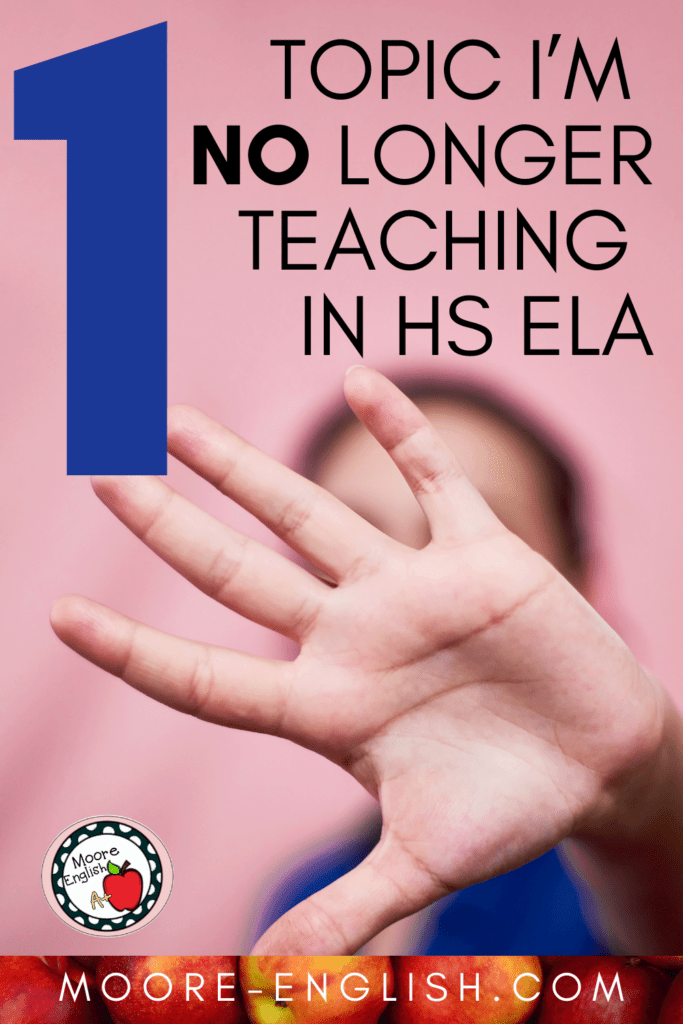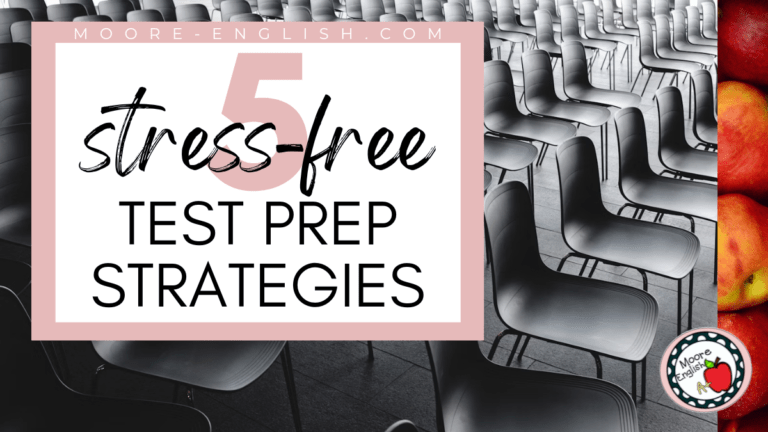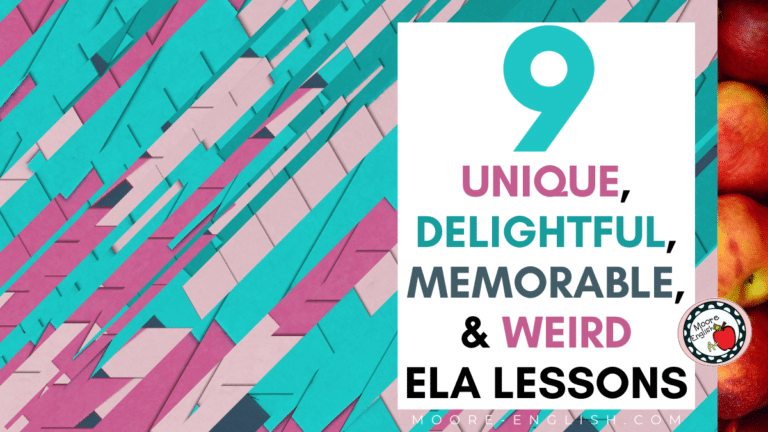Recently, I wrote about finishing my Ed.D. In one of the last classes, we were asked to write a reflective paper about professionalism. In this context, we were writing a paper about communication standards, the use of formal language, tone policing, etc. We were not writing about building healthy boundaries or sustainable teaching practices.
Writing the paper was one of the most challenging things I did in my Ed.D program, not because the format or structure was difficult but because I strongly objected to the topic.
- For one, my ego was bruised because I was being asked to write this paper at the end of a doctoral program. Yep, I was feeling butt hurt. Very mature, I know.
- More importantly, the concept of “professionalism” has a long history of racism and ableism, especially when it focuses on physical criteria.
Today, I want to share with you how I approached this assignment and the effects it had on me as a high school English teacher.
This post this post may contain affiliate links. Please read the Terms of Use.
Doing the Work
As a white, cisgender, middle class woman, “professionalism” is a concept that didn’t stand out to me until later in life. When I was a student in high school debate class, we often emphasized the importance of being professional in appearance, tone, and action. Similarly, as a student in personal finance class, when we did mock interviews, I did not bat an eye at the concept of behaving like a young professional.
However, this is a classic case of “know better, do better.”
In the last year or so, I have been in something of a nonfiction renaissance. Throughout the last year, I have read a number of memorable essay collections and memoirs. Three standouts were Wannabe by Aisha Harris, Admissions by Kendra James, and Token Black Girl by Danielle Prescod.
While each book was unique (Harris focuses on popular culture, James focuses on private education, and Prescod focuses on the fashion industry), each author chronicled her experiences with racism. In all three books, the authors discuss how standards of professionalism worked against them, whether in pursuing their careers, securing scholarships, or building workplace relationships.
Similarly, one of my doctoral classmates discussed how the communication standards associated with professionalism represent an ableist perspective. It’s a perspective that emphasizes standards of vision, hearing, and movement that are not available to everyone.
After these experiences, I cannot think of professionalism as anything other than a marker of white supremacy and patriarchy. In other words, its purpose and its “value” lies in maintaining a status quo that serves only a portion of the population.
How to Remove Professionalism from the Classroom
As I continue to learn and read more about markers of white supremacy, I continually change my perspective and behavior. It’s an ongoing process and will be with me long after I’ve left the classroom. But today I want to share some ways I’m removing professionalism from the classroom:
- First, instead of focusing on ableist standards of communication, I’ve worked hard to emphasize quality communication. When students and I discuss formal presentations, for example, we talk about how quality communication can be inclusive. How can students make their presentations as accessible as possible? How can a presentation be welcoming and inviting? (If you were curious, presentations are part of my state standards, so they’re a fact of life but one I can work to make more accessible to all students).
- Second, my department has adjusted our presentation rubrics to remove any reference to appearance. A student’s hair style, clothing, etc. should not be a factor in assessment.
- Similarly, I adjusted my strategy for assessing formative classroom discussions. I wanted to remove my own bias from the grading process. As a white woman, was I assessing discussions equitably? Was I more likely to think a Black student responded “aggressively,” or a female student acted as a “shrew”? To that end, each class established its norms for healthy classroom discussion. Then, in the assessment phase, students score themselves based on how well they execute those norms.
An Ongoing Process
At the end of the day, this is an ongoing process for me. I don’t want to give the impression that I know everything, but I wanted to share some small steps I’m taking to address gaps or injustices in my pedagogy.
In the past, I have addressed similar problems by eliminating summer assignments and by using data to reflect on my choices. Will I continue to find gaps or injustices going forward? Certainly. But I will also try to learn from those problems and address them in a forthright and honest manner. I hope you will do the same and join me in this ongoing process.














